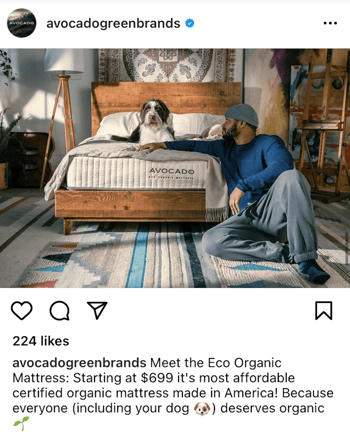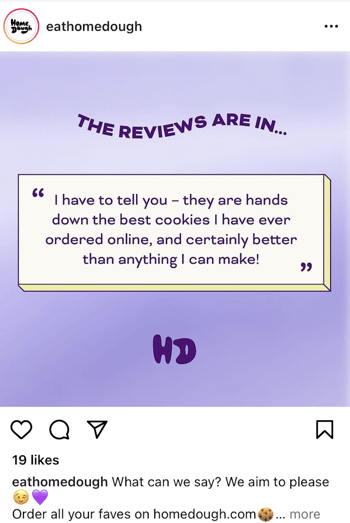
DTC (direct-to-consumer) brands are having their moment right now.
That’s because taking a DIY approach to ecommerce is easier than ever. Independent merchants are constantly uncovering clever ways to bypass third-party retailers.
But despite popular belief, “independent” doesn’t mean “small.”
Food for thought: DTC brands generated a whopping $129 billion in revenue in 2021. That’s approximately 16% of all ecommerce sales. Woah.
Oh, and that growth doesn’t look likely to slow down anytime soon.
Chances are you’ve heard of direct-to-consumer ecommerce but aren’t 100% sure what the hype is all about. This guide will teach you everything you need to know about DTC!
What is DTC (Direct-to-Consumer) and How Does It Work?
Let’s kick things off by breaking down the meaning of DTC in simple terms.
DTC (direct-to-consumer or D2C) refers to a business model where brands sell products directly to customers.
- Rather than relying on wholesalers and third-party retailers, DTC brands are solely responsible for advertising, fulfillment and building relationships with customers.
- Most consumer brands sell exclusively online due to the low barrier to entry — the cost of setting up a Shopify store and availability of social ads means you can build an ecommerce presence on a budget.
- DTC companies overwhelmingly rely on brand loyalty, word-of-mouth advertising and creative marketing campaigns to grow from the ground up.
While most DTC brands are online-only, the nature of direct-to-consumer commerce is evolving.
Some consumer brands get bought outright by major retailers. Others have their products featured in big-box stores (think: Ulta, Target) while still selling directly to consumers on their website. This hybrid model gives DTC companies the best of both worlds to maximize sales.
For example, Youth to the People was founded in 2015 as a totally independent beauty brand. Fast-forward to the present day and you can find their products in stores like Sephora. Heck, they’re actually being acquired by L’Oreal and recorded an estimated $50 million in sales during 2021.
That said, they’re still selling products independently. They’re still a DTC brand.

Meanwhile, DTC giants like Glossier are an example of how direct-to-consumer brands can go above and beyond. In recent years, the brand has expanded to brick-and-mortar storefronts beyond their occasional pop-up shops. Likewise, they’re found in pretty much every major beauty retailer.
. .png?width=255&name=Screenshot_20220311-120511%20(1).png)
.png?width=273&name=Screenshot_20220311-120632%20(1).png)
Photo Credit: @heyitsromeca / @chloeperkinsx
These brands are still considered DTC brands despite their evolution beyond only selling to customers directly. These examples prove that there are multiple approaches to winning with the DTC model.
What Makes DTC “Different?”
DTC is scratching an itch for merchants that traditional retail can’t.
Here’s a snapshot of what sets DTC apart from traditional retail and ecommerce:
- You control the customer experience. DTC companies have complete creative freedom when it comes to the customer journey. This includes branding, design, ads, checkout and engagement.
- You can cut out the middleman. By eliminating fees for fulfillment and not having to sell wholesale, DTC is cost-efficient for the brand and consumer alike.
- Feel empowered. DTC brands have a unique opportunity to grow independently. In fact, huge investments in consumer brands recently are similar to what we see in Silicon Valley. For example, beauty brand Beauty Pie recently raised $170 million in capital. Seems kind of unheard of for a non-tech company, right?
Why is DTC So Popular?
The popularity of the DTC business model boils down to a few factors.
The big one? Consumers at large are more comfortable than ever buying from independent businesses rather than just the likes of Amazon or household names in retail. The growing “shop small” sentiment in recent years likewise drives consumers to seek out up-and-coming brands.
Consider also that DTC sales exploded during the pandemic. An influx of online shoppers and the closing of brick-and-mortar stores was the perfect storm for smaller companies looking to tap into a consumer base that was eager to spend.
3 Prime Examples of DTC Brands (and How They’re Unique)
Consumer brands come in all shapes and sizes. They aren’t restricted to a single industry, either.
Beauty. Clothing. Mattresses. Food. You name it, there’s a DTC brand selling it.
Let’s look at some brands that highlight how diverse and specialized the DTC space is.
Beauty Pie is a luxury beauty brand that sells high-performance, expert-crafted products for surprisingly affordable prices.

Beauty Pie works with beauty and wellness labs to create quality products with no retail markup. Customers pay a monthly membership fee that allows them to shop with the brand, highlighting how customer loyalty and exclusivity play into the power of DTC.
Oh, and they’re upfront about how they’re independent.

Photo Credit: @beautypie
Avocado Green Mattress’s trademark is their self-proclaimed “farm to mattress” production. The company cuts out the supply chain middleman by using sustainably harvested wool from their farm to create their mattresses.
Customers can purchase these organic mattresses directly through their website or a select few brick-and-mortar stores.
Oddly enough, the DTC mattress market is surprisingly competitive. Casper, Purple and Nectar Sleep are just a few other big names in the space. This level of competition highlights how important it is for direct-to-consumer brands to carve out their niche.
Avocado does exactly that by putting sustainability front-and-center throughout its advertising strategy.

Photo Credit: @avocadogreenbrands
Home Dough is a non-GMO cookie dough company that sends fresh, ready-to-bake cookie dough right to customers’ front doors. From the homemade cookie dough creation process to their clever packaging and timely delivery, Home Dough handles it all.

Photo Credit: @eathomedough
A dough-to-customer brand? That’s right! Again, you’d be surprised at just how specialized the DTC space can get.
What Are the Advantages of the DTC Business Model?
So, why are so many businesses going the direct-to-consumer route? Consider:
- Cost-effectiveness for brands and buyers alike. Even if you're on a shoestring budget, you can start a Shopify store. Marketing your DTC company is relatively cheap, too. Harnessing the power of social media and word-of-mouth marketing on social media can get more eyes on your brand without breaking the bank.
- Retaining more of your sales. The cost-effectiveness of the DTC business model allows you to pass savings onto your customers. Customers don’t have to deal with retail markups and brands don’t have outside players eating into their profits. Again, a win-win.
- More personal customer relationships. Direct-to-consumer brands tend to work closely with their customers and personalize the shopping experience whenever possible. This builds loyalty and likewise gives brands a much-needed sense of authenticity. As an added bonus, brands retain greater knowledge of customer behavior by having control over their experiences. This helps you understand what makes loyal customers tick.
Keep in mind that the best consumer brands prioritize making connections with customers. That’s why social media is central to DTC advertising.
For example, razor subscription brand Billie does a brilliant job at fostering relationships. Aside from an inviting website and fierce social media presence, Billie interacts with customers on the regular.

Photo Credit: @billie
These interactions help build the one-on-one relationships needed to make people loyal to your brand long-term.
What are the Challenges of the DTC Business Model?
Despite its popularity, DTC is far from foolproof. Common hurdles include:
- You’re forced to scale your own audience. Growth is a challenge for any merchant but doing it all by yourself is even more daunting. Selling through a third-party retailer gives your brand a built-in consumer base to work with. On the flip side, selling independently demands time and patience as you build your list from scratch.
- Competition is fierce. There are dozens (if not hundreds) of competing DTC brands in any given space. Standing out from the crowd is tough. This is especially true when competitors have access to the exact same tools and marketing tactics as you do.
- Limited time and resources. The DTC business model requires a ton of daily legwork. Customer service. Inventory Management. Marketing. The list goes on and on. With your brand doing everything from start to finish, juggling all these moving pieces is no small feat.

What Does it Take to be Successful in DTC?
There is no “right” way to boom as a DTC brand.
That said, there are a few common threads that top-tier consumer brands share:
- Sell killer, high-quality products. No surprises here. Your products have to legitimately be worth talking about if you want any sort of word-of-mouth. And if customers aren’t talking about your product, give them a reason to!
- Attention to detail. Your brand needs a strong pulse on what delights your target audience. That means giving people what they want beyond your product — stellar customer service, unique packaging and personalized responses are a good start.
- Creative marketing. Marketing is the key ingredient to making a name in DTC. You need a “Wow!” factor. Many of the biggest DTC brands have a distinct voice and embrace consumer-to-consumer marketing to build even better relationships with customers.
DTC skincare brand Drunk Elephant serves as a great example of a direct-to-consumer brand that ticks all of the boxes above. Through unique packaging, relatable memes and reliable products, Drunk Elephant makes it hard for consumers not to love them.
Photo Credit: @drunkelephant
How to Apply DTC Tactics to Grow Your Brand
Needless to say, DTC ecommerce is here to stay.
And now that you know what direct-to-consumer success looks like, consider how your brand can apply the same principles.
Step one is getting closer with your customers and putting them front-and-center throughout your marketing efforts on social media, on your website and beyond.
Not sure how to make it happen? Connect with one of our consumer-to-consumer marketing specialists to learn how we can develop a creator-based marketing campaign that gets people talking.

/what%20is%20dtc.jpeg)